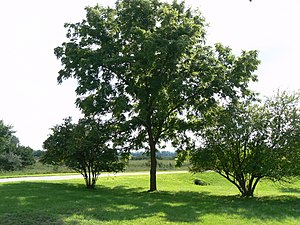
Back علاقات حيوية Arabic Interaición biolóxica AST Təbii birliklər Azerbaijani Взаимодействия между организмите Bulgarian Biološka interakcija BS Interacció biològica Catalan Biologická interakce Czech Biologisk interaktion Danish Biologia interagado Esperanto Interacción biológica Spanish

In ecology, a biological interaction is the effect that a pair of organisms living together in a community have on each other. They can be either of the same species (intraspecific interactions), or of different species (interspecific interactions). These effects may be short-term, or long-term, both often strongly influence the adaptation and evolution of the species involved. Biological interactions range from mutualism, beneficial to both partners, to competition, harmful to both partners. Interactions can be direct when physical contact is established or indirect, through intermediaries such as shared resources, territories, ecological services, metabolic waste, toxins or growth inhibitors. This type of relationship can be shown by net effect based on individual effects on both organisms arising out of relationship.
Several recent studies have suggested non-trophic species interactions such as habitat modification and mutualisms can be important determinants of food web structures. However, it remains unclear whether these findings generalize across ecosystems, and whether non-trophic interactions affect food webs randomly, or affect specific trophic levels or functional groups.